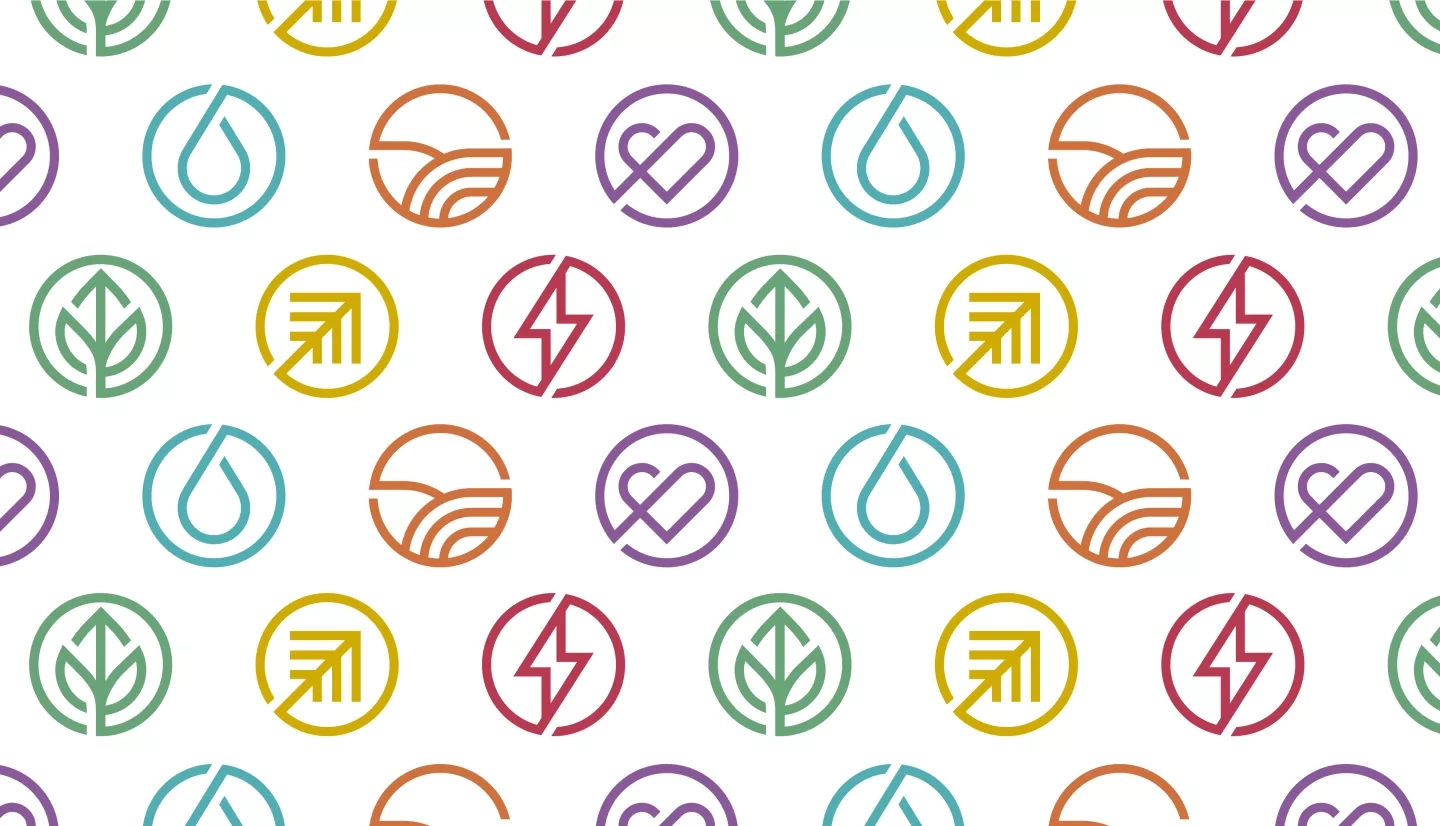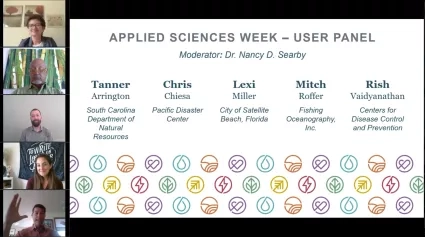Applied Sciences Week 2020 celebrated NASA Earth science applications that help to make our world a better place.
Building off the annual Earth Science Applications Showcase, which takes place in-person at NASA Headquarters each summer, Applied Sciences Week 2020 offered the broader community a virtual opportunity to engage with and learn from the applications work conducted by NASA Earth's Applied Sciences Program. Over 550 people gathered virtually to exchange ideas and knowledge and discuss how Earth observations can be harnessed for societal good.
The week's events included four days of plenary meetings, three days of breakout sessions, a volunteer mapathon, and an end-user panel. Plenary sessions were organized by geographic regions with a different part of the U.S. (Western U.S., Central U.S., and Eastern U.S.) and international regions (Americas, Africa, and Asia). Presentations addressed a broad array of thematic areas such as Ecological Forecasting, Disasters, Health & Air Quality, Food Security & Agriculture, and Water Resources, as well as Urban Development and Transportation & Infrastructure.
To kick off Applied Sciences Week 2020, a panel of five end-users shared their insights and experiences working with the Applied Sciences Program, applying Earth observations to their decision making needs, and the many benefits they've realized.
A big focus of the week was the DEVELOP Program and its early-career professionals, who presented 15 feasibility projects and engaged with attendees in daily breakout sessions. The SERVIR Program also highlighted its work in developing countries and hubs in Columbia, Niger, Kenya, Nepal, and Thailand. The week also highlighted NASA's VALUABLES Consortium and efforts focused on using Earth observations to support the UN's Sustainable Development Goals (SDGs), as well as activities focused around key partnerships.
Applied Sciences Week 2020 Agenda
Proceedings:
August 3rd Plenary:
Day One - Video Link & Highlight Presentations PDF
- Section 1: Opening Words (St.Germain), Applied Sciences Introduction (Friedl, Sylak-Glassman)
- Section 2: Thematic Application Area Introductions & Highlights
- Health & Air Quality (Haynes, O'Brien, Hudson-Odoi)
- Ecological Forecasting (Turner, Nicolau)
- Disasters (Green, Bolten)
- Water Resources (Brennan, Grazcyk)
- Food Security & Agriculture (Brennan, Whitcraft)
- Section 3: End-User Panel (Searby, Arrington, Chiesa, Miller, Roffer, Vaidyanathan) & Closing Words (Cauffman, Friedl)
August 4th Plenary: Western US & Americas
Day Two - Video Link & Highlight Presentations PDF
- Section 1: Opening Words (Friedl), Applied Sciences Overview (Sylak-Glassman)
- Section 2: Applications Highlights
- Health & Air Quality (Tong, Solis)
- Water Resources (Huntington)
- Ecological Forecasting (Zhou, Lad)
- Disasters / Transportation & Infrastructure (Green, Molthan, Jensen)
- Section 3: Programmatic & Partnership Highlights
- SERVIR (Nicolau)
- SICA (Hernandez, Quiroga)
- VALUABLES (Mabee)
- Section 4: Closing Remarks (Kaye, Friedl)
August 5th Plenary: Central US & Africa
Day Three - Video Link & Highlight Presentations PDF
- Section 1: Opening Words (Friedl), Applied Sciences Overview (Sylak-Glassman)
- Section 2: Applications Highlights
- Health & Air Quality / Urban Development (Wimberly, Paris)
- Disasters / Energy (Glasscoe, Nelson)
- Ecological Forecasting (Wood, Hafer)
- Water Resources (Martinez, Nguyen)
- Section 3: Programmatic & Partnership Highlights
- NASA DAACs (Murphy)
- SERVIR (Adams)
- Global Partnerships Program (McClain)
- Section 4: Closing Remarks (Friedl)
August 6th Plenary: Eastern US & Asia
Day Four - Video Link & Highlight Presentations PDF
- Section 1: Opening Words (Friedl), Applied Sciences Overview (Sylak-Glassman)
- Section 2: Applications Highlights
- Health & Air Quality / Urban Development (Insaf, Barrowman)
- Disasters / Energy (Huyck, Putti, Munshi)
- Ecological Forecasting (Goes, Wangchuk)
- Water Resources (Lee, Goode, Stid, Kaneko)
- Section 3: Programmatic & Partnership Highlights
- SDGs (Kavvada)
- SERVIR (Mayer)
- Section 4: Closing Remarks (Friedl)

